 November 2, 2017 John E. Ross, KD8IDJ, Editor
| ||||||
American Red Cross Hails "New Partnership" with ARRL Following Puerto Rico Deployment The American Red Cross (ARC) this week thanked ARRL and its "Force of 50" hurricane recovery volunteers who deployed to Puerto Rico earlier this month, and it suggested a new level of partnership "This mission marked an exciting new path for our two organizations with it being the first time we deployed ARRL volunteers to a Red Cross relief operation," Johnson wrote. "I continue to hear incredible stories about how the ARRL volunteers supported individuals, communities, and partner organizations during their time in Puerto Rico." ARRL and the American Red Cross have a long-standing memorandum of understanding (MOU) to cooperate in emergencies and disasters.
"It was a complex cooperation in an austere environment, and the mission certainly had its challenges," Johnson continued. "While we have much to learn from this new experience and areas to improve upon, we remain committed to working with you, ARRL, and your cadre of talented volunteers." Johnson singled out for special praise ARRL Emergency Response Manager Mike Corey, KI1U, "for his leadership in planning and managing the mission." "Mike was fast acting and thoughtful, constantly working to make the mission effective through transparency and collaboration," Johnson said. "We simply could not have achieved the outcomes without him." Johnson said the ARC looks forward to working together with ARRL to "serve those impacted by disasters." ARRL Executive Committee Updated on Entry-Level License, Amateur Auxiliary Revision The ARRL Executive Committee reviewed plans to implement recommendations of the Entry Level License Committee, when it met on October 14 in Hartford, Connecticut. At its July meeting, the ARRL Board of Directors called for work to go forward on a plan to pursue additional HF digital and phone privileges for Technician licensees. The Executive Committee was told that New England Director and Entry-Level License Committee Chair Tom Frenaye, K1KI, will work with ARRL General Counsel Chris Imlay, W3KD, and International Affairs Vice President Jay Bellows, K0QB, to develop the specifics of a proposal to the FCC requesting expanded frequency and mode privileges for Technicians. This will be completed in time for review by the full Board of Directors at its January meeting.
The Executive Committee also heard a brief report on the work of the ad hoc Amateur Auxiliary Study Committee, which has prepared the first draft of a new training manual. The Committee is awaiting feedback from the FCC on a proposed memorandum of understanding for the Amateur Auxiliary. The chair of the study panel, ARRL Second Vice President Brian Mileshosky, N5ZGT, told the Executive Committee that several topics related to in-house management of the program still must be resolved, and the committee hopes to have the revised Amateur Auxiliary package ready for consideration by the ARRL Board of Directors at its January meeting. The Executive Committee requested the Programs and Services Committee to undertake an evaluation of all ARRL membership program offerings, in coordination with the Administration and Finance Committee. The action followed a recommendation from ARRL CEO Tom Gallagher, NY2RF. The Programs and Services Committee is to report back to the Executive Committee next fall. In his CEO report, Gallagher highlighted the efforts of the "Force of 50," the ARRL Amateur Radio volunteers deployed to Puerto Rico, which, he told the Committee, were assembled and equipped within 48 hours of the initial request from the American Red Cross for volunteers. ARRL President Rick Roderick, K5UR, who chaired the meeting, expressed pride in the League's efforts to provide hurricane relief to Puerto Rico and requested that Gallagher relay the Executive Committee's appreciation to the Headquarters staff for its efforts to assist with hurricane relief efforts. Other Business
Minutes of the October 14, 2017 meeting of the ARRL Executive Committee have been posted on the ARRL website. The Doctor Will See You Now! "QRP" is the topic of the latest episode of the "ARRL The Doctor is In" podcast. Listen...and learn!
Every 2 weeks, your host, QST Editor-in-Chief Steve Ford, WB8IMY, and the Doctor himself, Joel Hallas, W1ZR, will discuss a broad range of technical topics. You can also e-mail your questions to doctor@arrl.org, and the Doctor may answer them in a future podcast. Enjoy "ARRL The Doctor is In" on Apple iTunes, or by using your iPhone or iPad podcast app (just search for "ARRL The Doctor is In"). You can also listen online at Blubrry, or at Stitcher (free registration required, or browse the site as a guest) and through the free Stitcher app for iOS, Kindle, or Android devices. If you've never listened to a podcast before, download our beginner's guide. Just ahead: "NVIS Propagation." New Digital Modes Changing Complexion of Bands and Perhaps of Ham Radio The wave of software-based digital modes over the past several years has altered the atmosphere of the HF bands. Some suggest the popularity of modes that make it possible to contact stations neither operator can even hear has resulted in fewer CW and SSB signals on bands like 6 meters and 160 meters. Traditional modes require far more interaction and effort on the part of the operator; the newer digital modes, not so much. The recent advent of the still-beta "quick" FT8 mode, developed by Steve Franke, K9AN, and Joe Taylor, K1JT -- the "F" and the "T" in the mode's moniker -- has brought this to a head. Some now wonder if FT8 marks the end of an era and the start of a new, more minimalist age.
"We've been as surprised as anyone about the rapid uptake of FT8 for making QSOs on the HF bands," Taylor told ARRL this week. Rather than viewing FT8 as a total game-changer, he sees a dividing line between such digital modes and more traditional modes. "SSB and CW are general-purpose modes," Taylor asserted. "They are good for ragchewing, DXing, contesting, emergency communications, or whatever. FT8 and the other modes in WSJT-X are special-purpose modes. They are designed for making reliable, error-free contacts using very weak signals -- in particular, signals that may be too weak for the more traditional modes to be usable, or even too weak to hear." Taylor notes that the information exchanged in most FT8, JT65, and other digital-mode contacts "is little more than the bare minimum for what's considered to be a valid contact." In addition to call signs and signal reports, stations may exchange grid squares and acknowledgments. Radio amateurs recently commented in response to a Top Band Reflector post, in which Steve Ireland, VK6VZ, averred that because of FT8, "160-meter DXing has changed, perhaps forever" in recent weeks. Ireland said he downloaded FT8 but just couldn't bring himself to use it on the air. "My heart isn't in it," he wrote. "My computer will be talking to someone else's computer, and there will be no sense of either a particular person's way of sending CW or the tone of their voice. The human in radio has somehow been lost."
Another suggested that FT8 is already falling victim to its own success, with too many stations crowding around the designated FT8 frequencies. Others were more philosophical, with remarks along the lines of this one: "It is allowing people who have smaller stations the opportunity to get on and use their radios and a computer to make contacts they never would have been able to make. This is great for ham radio!" Taylor would agree. As he sees it, FT8 won't replace modes such as CW or SSB. "Nevertheless, it's clear that -- at least in the short term -- many hams enjoy making rapid-fire minimal QSOs with other hams, all over the world, using modest ham equipment," he said. "For this purpose, FT8 shines." Read more. Joe Spier, K6WAO, Ascends to AMSAT-NA Presidency, Announces Next CubeSat Initiative The AMSAT-NA Board of Directors has elected Joe Spier, K6WAO, of Weimar, California, as the organization's new president. An ARRL and AMSAT Life Member, Spier, 58, succeeds Barry Baines, WD4ASW, who served as AMSAT President for the past 9 years. Spier is a well-known figure in AMSAT and Amateur Radio Satellite circles. He served previously as AMSAT-NA Executive Vice President and Vice President for Educational Relations. The Board's action came at the AMSAT-NA Annual General Meeting in Reno, Nevada, where Spier announced the next phase of AMSAT's CubeSat program, called "GOLF."
As an initial step in the GOLF program, AMSAT will be submitting a NASA CubeSat Launch Initiative proposal for the GOLF-T satellite project, which will serve as a rapidly deployable low Earth orbit (LEO) testbed for technologies necessary for successful CubeSat missions in a wide range of orbit, including LEO, medium Earth orbit (MEO), geosynchronous orbit (GEO), and highly elliptical orbit (HEO). "The GOLF-T project tees off the next phase of our CubeSat program," punned AMSAT-NA Vice-President Engineering, Jerry Buxton, N0JY. "GOLF-T provides AMSAT hardware and knowledge for attitude determination and control (ADAC) capability and the opportunity to develop a 3U spaceframe with deployable solar panels that can be used in LEO or HEO missions -- two of the major systems required in future GOLF and HEO missions."
Other officers elected by the Board were Paul Stoetzer, N8HM, Executive Vice President; Jerry Buxton, N0JY, Vice President Engineering; Drew Glasbrenner, KO4MA, Vice President Operations; Clayton Coleman, W5PFG, Secretary; Keith Baker, KB1SF/VA3KSF, Treasurer, and Martha Saragovitz as Manager. Read more. 630-Meter Special Operating Event on November 11 Commemorates Berlin Treaty Amateur Radio operators will descend upon 630 meters on November 11 during a special operating event to commemorate the 1906 Berlin Treaty, which made 500 kHz the International Distress Frequency on November 3 of that year. US radio amateurs recently gained access to 630 meters, but must have notified the Utilities Technology Council (UTC) of their intent to operate and either received explicit approval or not heard anything for 30 days in order to participate.
Some stations are expected to offer cross-band contacts, transmitting on 630 meters and listening on 160, 80, and 40 meters. Part 5 Experimental operators, including WD2XSH stations and others who don't yet have UTC approval, will operate in the 472-479 kHz band or just outside of it, and there may be some operation on 500 kHz proper. The Maritime Radio Historical Society will activate its KSM/KPH transmitter at Bolinas, California, for a mini "Night of Nights" with special messages and bulletins. -- Thanks to Fritz Raab, W1FR HamSCI Workshop Aims to Foster Collaboration between Hams and Space Science/Weather Researchers HamSCI -- the Amateur Radio citizen science initiative -- has announced a 2-day workshop February 23-24 at New Jersey Institute of Technology (NJIT) in Newark. HamSCI's Nathaniel Frissell, W2NAF, has posted a survey to gauge interest and potential attendance.
Frissell, an NJIT assistant research professor, invited presentations from within the Amateur Radio community. "We will also accept submissions of abstracts and demonstrations of other topics that are of interest to ham radio and ionospheric science," he said. "The solar eclipse topic is a follow-on to this summer's total solar eclipse and the Solar Eclipse QSO Party (SEQP). We hope to have presentations from both ham radio operators and professional scientists showing the data that they have collected and what they think it means." The tentative schedule calls for oral presentations on "Ham Radio Data Sources, Databases Analysis" and "Solar Eclipse Effects on the Ionosphere, including results from the Solar Eclipse QSO Party." Phil Erickson, W1PJE, of MIT's Haystack Observatory is scheduled to be the Friday evening banquet speaker. Tutorials on Saturday will include "Ham Radio for Space Scientists," with Frank Donovan, W3LPL, and "Space Science for Ham Radio Operators" (speaker pending). The Personal Space Weather Station Frissell said HamSCI would like to encourage development of the personal space weather station concept. "This is analogous to a personal weather station that people install at their homes to measure temperature, wind speed, rainfall, and humidity, and report this data to groups like the NWS, NOAA, and Weather Underground," Frissell said. "We want to create a similar package for space weather and have that data go to a single repository."
An ideal personal space weather station would likely include instruments able to detect things such as traveling ionospheric disturbances, radio blackouts, propagation changes, lightning, and magnetospheric activity, Frissell said. It would probably include, at a minimum, a wideband software-defined radio, a magnetometer, a timing source, and a computer -- all currently available, but not as an integrated package, he pointed out. At the February workshop, HamSCI wants to better define the capabilities of a personal space weather station as well as how to implement the concept. "HamSCI will be teaming up with TAPR to do this," Frissell said. "Scientists will talk about what science topics the device should be able to measure, and TAPR will discuss how to actually design and implement the device." Frissell said he hopes hams attending will come away more knowledgeable about ionospheric and space science, and scientists will gain a better understanding of Amateur Radio. Read more. CQ World Wide SSB Event Inaugurates Fall Contest Season The CQ World Wide DX Contest (SSB) kicked off the fall contest season this past weekend with plenty of activity from around the world. As The Daily DX reported on October 30, some Top 10 operations from outside the US racked up claimed scores topping 30 million points. In the US, it appears that only two major multioperator/multi-transmitter high-power entries, K3LR and W3LPL, were active in this year's event, with Tim Duffy, K3LR, and his 15-member crew claiming another big win and a world high in the MM HP category. Duffy's K3LR and Frank Donovan's W3LPL have sparred for high-score honors during many contests over the years. K3LR has won every US multi-multi category in the CQ WW phone starting in 2005, Duffy told ARRL.
Donovan said W3LPL was handicapped this time around due to the fact that some of the regulars were not able to make it this year. The W3LPL gang posted a not-too-shabby score of 15.2 million points, with 20 meters being the most fertile territory there. W3LPL picked up 438 contacts in 18 zones on 10 meters. The W3LPL team logged 7,686 contacts in 157 zones (606 countries). "We had lots of fun at K3LR," Duffy said. "The very best part is being with good friends in the K3LR shack and talking to our radio friends all over the world. Forty-eight hours of pure magic that never, ever gets old." Duffy also congratulated the W3LPL operators, who, he said, "did well considering the challenging conditions and the operators that had to cancel at the last minute." "It is great to have this close competition never knowing who will finish on top," Duffy added. In Brief...
Getting It Right The headline of the article "Tiny LF Signal Makes the Hop from Newfoundland to the UK," in the October 26 edition of The ARRL Letter, incorrectly identified the frequency range. The frequency of 8.27 kHz is, as the story itself correctly notes, in the VLF (very low-frequency) range. The K7RA Solar Update Tad Cook, K7RA, Seattle, reports: The average daily sunspot number increased from 13.4 to 17.7 for the October 26-November 1 reporting week, compared to the previous 7 days. The main reason for the difference was that the previous 7 days started out with 2 days with no sunspots, and the latter period ended with 1 day of zero sunspots -- on November 1.
The Predicted planetary A index is 12, 8, 6, 5, and 8 on November 2-6; 16, 28, 40, 28, 25, and 8 on November 7-12; 5 on November 13-14; 12, 10, and 8 on November 15-17; 5 on November 18-19; 20 on November 20-22; 5 on November 23-27; 8 on November 28; 15 on November 29-30; 10, 8, 5, 25, and 28 on December 1-5; 35, 25, 20, and 8 on December 6-9; 5 on December 10-11; 12, 10, and 8 on December 12-14, and 5 on December 15-16. Sunspot numbers for October 26-November 1 were 23, 23, 22, 23, 22, 11, and 0, with a mean of 17.7. The 10.7-centimeter flux was 77.3, 76, 75.4, 75.3, 75.6, 75.4, and 72.6, with a mean of 75.4. Estimated planetary A indices were 20, 5, 6, 4, 3, 3, and 4, with a mean of 6.4. Estimated mid-latitude A indices were 16, 4, 5, 3, 1, 2, and 2, with a mean of 4.7. Send me your reports and observations. Just Ahead in Radiosport
See the ARRL Contest Calendar for more information. For in-depth reporting on Amateur Radio contesting, subscribe to The ARRL Contest Update via your ARRL member profile e-mail preferences. Upcoming ARRL Section, State, and Division Conventions
Find conventions and hamfests in your area.
. .
Subscribe to...
Free of charge to ARRL members...
Find ARRL on Facebook! Follow us on Twitter, Snapchat @ARRLHQ, and Instagram! | ||||||
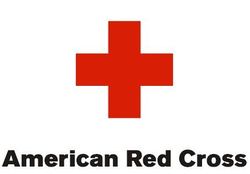 now exists between the two organizations. ARC Senior Vice President, Disaster Cycle Services Harvey Johnson this week wrote ARRL President Rick Roderick, K5UR, and ARRL CEO Tom Gallagher, NY2RF, to express his organization's gratitude for "all your amazing volunteers for the unwavering commitment demonstrated during the response to this unprecedented disaster in Puerto Rico." Johnson said the team's actions "made a significant difference" in the lives of those affected.
now exists between the two organizations. ARC Senior Vice President, Disaster Cycle Services Harvey Johnson this week wrote ARRL President Rick Roderick, K5UR, and ARRL CEO Tom Gallagher, NY2RF, to express his organization's gratitude for "all your amazing volunteers for the unwavering commitment demonstrated during the response to this unprecedented disaster in Puerto Rico." Johnson said the team's actions "made a significant difference" in the lives of those affected.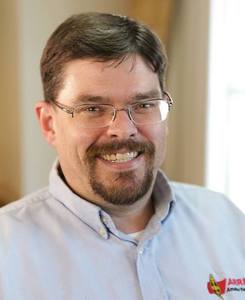
 Frenaye explained this week that enhancing the Technician license would be "an immediate step that can take place with little FCC impact, since the question pool would not need to be changed." He pointed out, however, that this approach "does not rule out longer-term consideration of a new entry-level license." The Entry-Level License Committee had recommended both steps in its July report to the Board.
Frenaye explained this week that enhancing the Technician license would be "an immediate step that can take place with little FCC impact, since the question pool would not need to be changed." He pointed out, however, that this approach "does not rule out longer-term consideration of a new entry-level license." The Entry-Level License Committee had recommended both steps in its July report to the Board. Sponsored by
Sponsored by 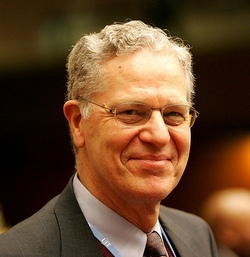
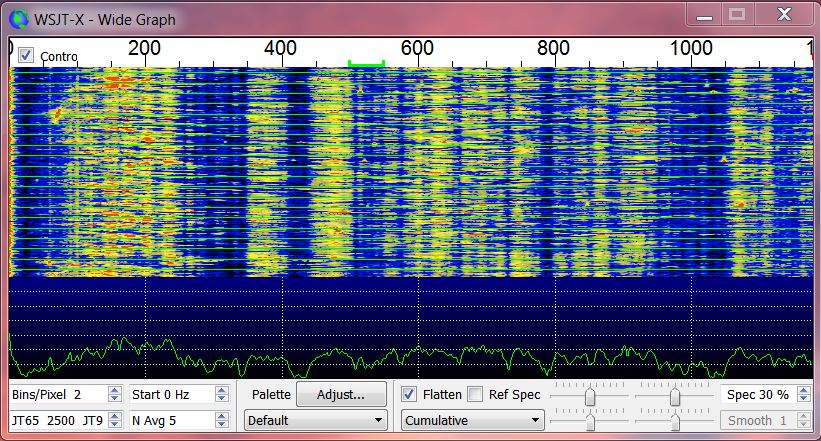 In his
In his 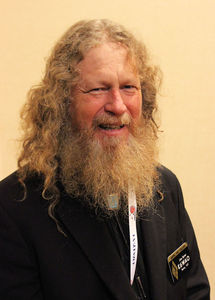 GOLF is an acronym for "Greater Orbit, Larger Footprint." AMSAT considers the new initiative as a crucial step toward fulfilling AMSAT's strategic goals involving high-altitude, wide-access satellite missions.
GOLF is an acronym for "Greater Orbit, Larger Footprint." AMSAT considers the new initiative as a crucial step toward fulfilling AMSAT's strategic goals involving high-altitude, wide-access satellite missions.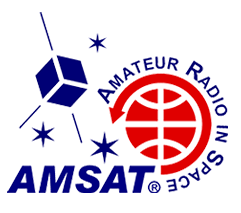 AMSAT said GOLF-T will provide the opportunity for rapid deployment and on-orbit testing of AMSAT's Advanced Satellite Communications and Exploration of New Technology (ASCENT) program's technology. ASCENT will include radiation-tolerant transponder and Integrated Housekeeping Unit (IHU) technologies that, AMSAT says, "will lead the way for low-cost, commercial, off-the-shelf systems that can function in MEO and HEO radiation environments." GOLF-T will also provide for the development of so-called "Five and Dime" (5 GHz and 10 GHz) field-programmable gate array software-defined radio (FPGA SDR) transponders for use on a variety of missions and orbits.
AMSAT said GOLF-T will provide the opportunity for rapid deployment and on-orbit testing of AMSAT's Advanced Satellite Communications and Exploration of New Technology (ASCENT) program's technology. ASCENT will include radiation-tolerant transponder and Integrated Housekeeping Unit (IHU) technologies that, AMSAT says, "will lead the way for low-cost, commercial, off-the-shelf systems that can function in MEO and HEO radiation environments." GOLF-T will also provide for the development of so-called "Five and Dime" (5 GHz and 10 GHz) field-programmable gate array software-defined radio (FPGA SDR) transponders for use on a variety of missions and orbits..jpg) Four different groups will take part: US radio amateurs, US Part 5 Experimental operators, Canadian radio amateurs, and the Maritime Radio Historical Society (
Four different groups will take part: US radio amateurs, US Part 5 Experimental operators, Canadian radio amateurs, and the Maritime Radio Historical Society (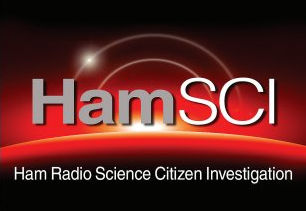 "We are inviting all hams and scientists interested in ham radio science," Frissell said. "The aim of this workshop is to foster collaborations between the ham radio and the space science and space weather research communities through presentations, discussions, and demonstrations. This year's meeting will focus on solar eclipse analysis, ham radio data sources and databases, and the development of a 'personal space weather station.'"
"We are inviting all hams and scientists interested in ham radio science," Frissell said. "The aim of this workshop is to foster collaborations between the ham radio and the space science and space weather research communities through presentations, discussions, and demonstrations. This year's meeting will focus on solar eclipse analysis, ham radio data sources and databases, and the development of a 'personal space weather station.'"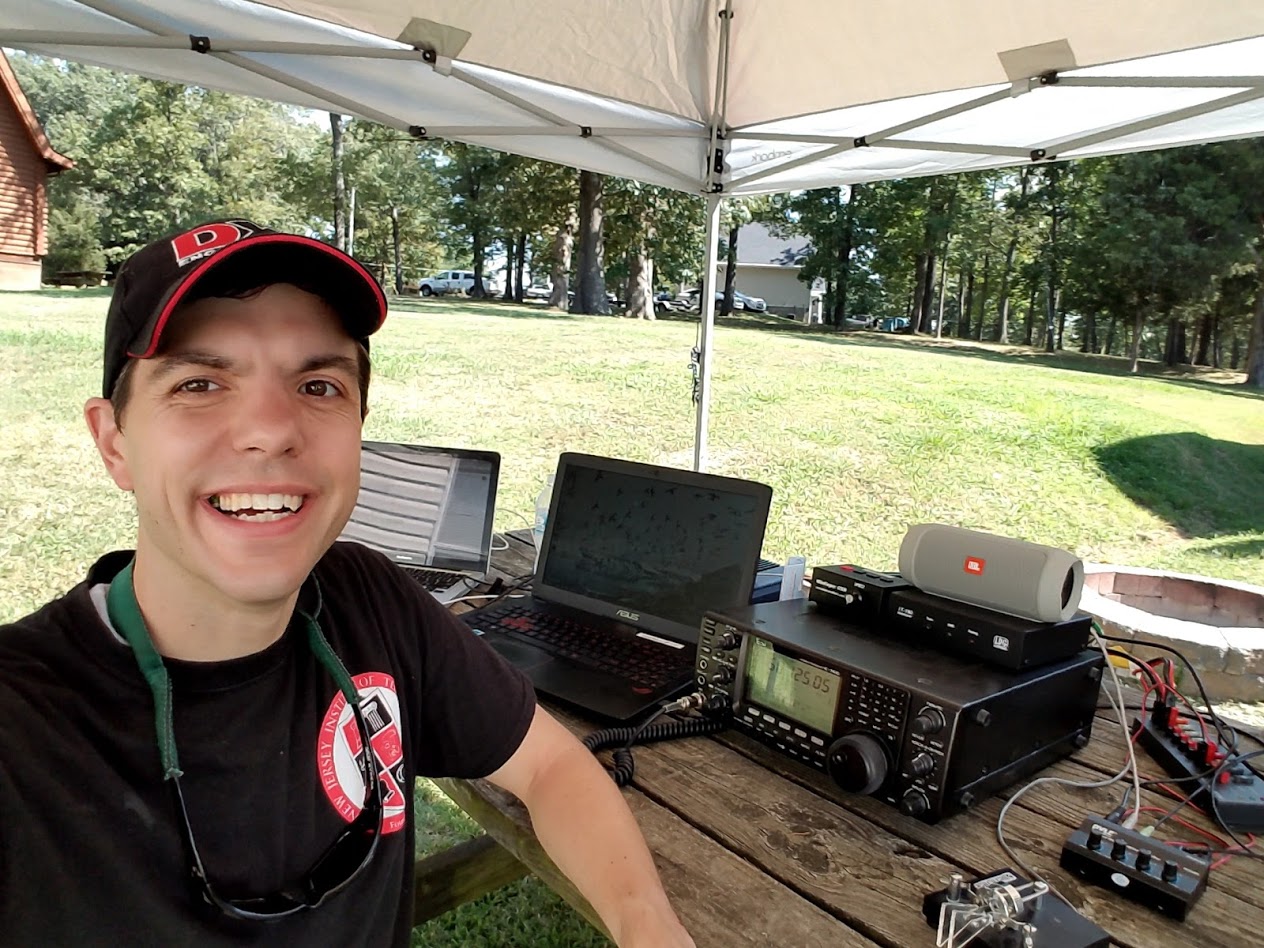
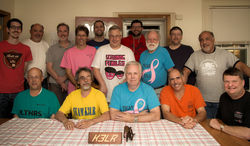 In earning 20.1+ million points at K3LR, 15 meters edged out 20 as the money band, with 40 meters only a few hundred contacts behind. K3LR managed 372 contacts in 21 zones on 10 meters. In all, K3LR logged 9,631 contacts in 174 zones (650 countries).
In earning 20.1+ million points at K3LR, 15 meters edged out 20 as the money band, with 40 meters only a few hundred contacts behind. K3LR managed 372 contacts in 21 zones on 10 meters. In all, K3LR logged 9,631 contacts in 174 zones (650 countries).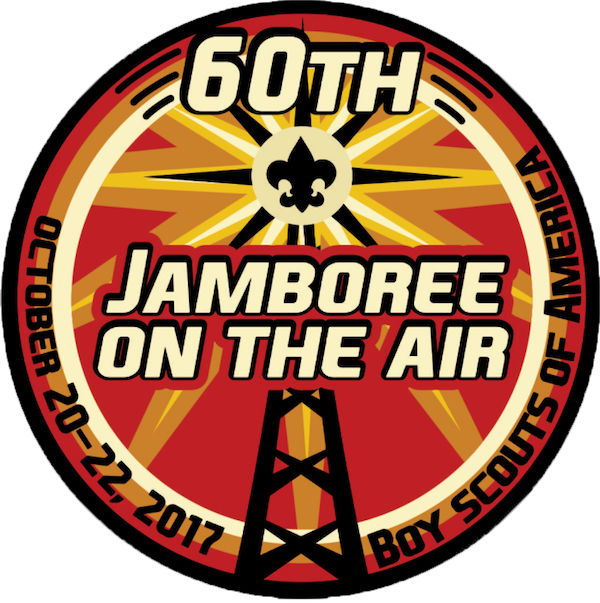 JOTA Wants Your on-the-Air Station Reports: Boy Scouts of America Jamboree on the Air (
JOTA Wants Your on-the-Air Station Reports: Boy Scouts of America Jamboree on the Air (.jpg) RadFxSat (Fox-1B) FM Satellite Set to Launch in November: The next AMSAT Fox-1 satellite,
RadFxSat (Fox-1B) FM Satellite Set to Launch in November: The next AMSAT Fox-1 satellite, 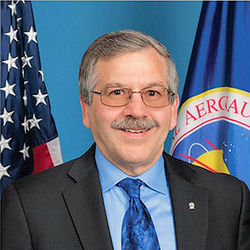 ARISS International Chair Frank Bauer, KA3HDO, Wins G3AAJ Trophy:
ARISS International Chair Frank Bauer, KA3HDO, Wins G3AAJ Trophy: 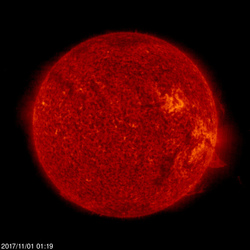 Predicted solar flux is 73, 74, and 73 on November 2-4; 72 on November 5-8; 70 on November 9-13; 71 on November 14; 72 on November 15-16; 73 and 74 on November 17-18; 75 on November 19-28; 72 on November 29-30; 70 on December 1-10; 71 on December 11; 72 on December 12-13, and 73, 74, and 75 on December 14-16.
Predicted solar flux is 73, 74, and 73 on November 2-4; 72 on November 5-8; 70 on November 9-13; 71 on November 14; 72 on November 15-16; 73 and 74 on November 17-18; 75 on November 19-28; 72 on November 29-30; 70 on December 1-10; 71 on December 11; 72 on December 12-13, and 73, 74, and 75 on December 14-16.







